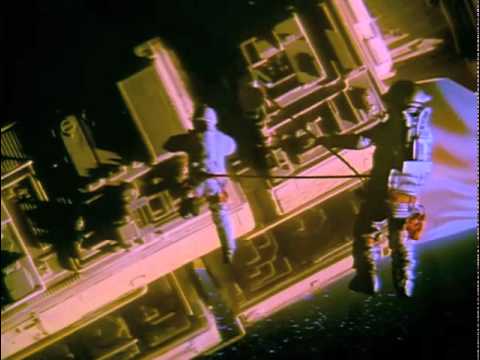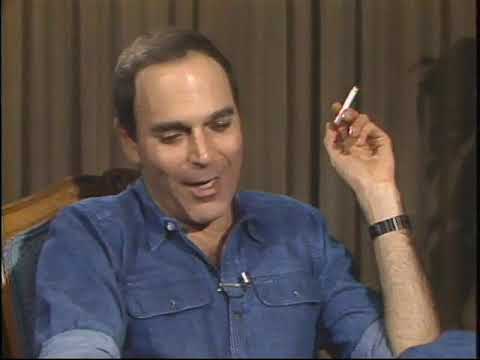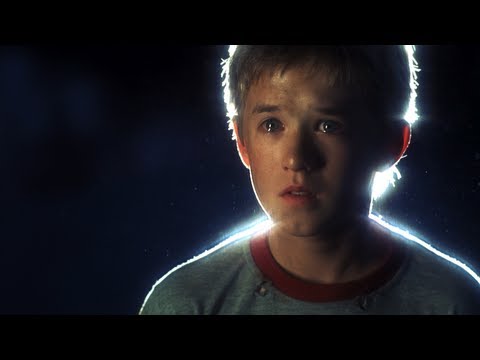Peter Hyams’ “2010: The Year We Make Contact” (1984) was the first time a director dared to make a sequel to a Stanley Kubrick film.
Of course, today this is commonplace, with Mike Flanagan’s excellent “Doctor Sleep” and that shaky portion of “Ready Player One” (making Jack Torrance a video game character – nice one, Steven) some obvious examples.
Any day now, we’ll probably hear about a sequel, prequel or “world building” spinoff of “A Clockwork Orange” or “Dr. Strangelove.” Nothing is sacred anymore.
The first (and unlikely to be last) sequel to Kubrick’s “2001: A Space Odyssey” (1968), Hyams had to do more than prove himself a worthy heir to the narrative created by Arthur C. Clarke’s 1951 short story, “The Sentinel,” and the staggering approach presented by Clarke’s richly-layered sci-fi narrative.
Note: Clarke’s novelization of “2001: A Space Odyssey” coincided with the film’s release.
There’s also Kubrick, whose style is as recognizable and impressive as it is nearly impossible to duplicate, let alone with feeling and purpose.

Hyams’ film begins with an eerie prologue, in which we hear a faded, bone-chilling recording of astronaut David Bowman (Keir Dullea) utter, “My God, it’s full of stars). A wordless, dread-inducing series of images from the first film and a data reading fill in newcomers on what has happened since the events of “2001.”
The U.S.S. Discovery remains in orbit, the hibernating crew is dead, astronaut Frank Poole is dead, and Bowman encountered a Monolith, which is still present, while he himself has gone missing.
The story then jumps to 2009, where Heywood Floyd (played previously by William Sylvester, now portrayed by Roy Scheider) is approached by a Russian scientist about joining a mission to investigate what happened on the U.S.S. Discovery. Floyd joins the robotic creator of HAL (Bob Balaban) and an oddly afraid-of-heights astronaut (John Lithgow).
Alongside a tense Russian crew, led by a great Helen Mirren, Floyd makes direct contact with Bowman, or whatever it is he has become after merging with the Monolith.
The first new line of dialogue is “Neatness is a good quality.” The same can be said of Hyams’ direction and approach to staging and filming scenes. While nowhere near Kubrick’s famously painstaking framing and aim for visual perfection, Hyams’ choice of shots smacks of precision.
Almost all of Hyams’ subsequent films, many of which I like a lot, have been criticized for being underlit or lying too heavily on “natural light.” Here, there is a beauty and fastidiousness that doesn’t match Kubrick but certainly creates splendid visuals and a continuity between the films.
Whatever Hyams’ film lacks in the comparable intellectual discovery or poetry of Kubrick’s film, the scale, sense of wonder and possibilities remain intact.
The sci-fi film “2010: The Year We Make Contact” was released in theatres today in 1984. #80s #80smovies pic.twitter.com/aUUVDl40F4
— LandOfThe80s (@landofthe80s) December 7, 2022
“2010” is smart, adult-minded sci-fi, possessing a seriousness and grandeur that matches the original. It also lacks the cold presentation, slow pacing and often challenging narrative of the original, which, nevertheless, I still prefer.
Hyams’ film is gorgeous but also compassionate.
The visual effects are mostly breathtaking, even as this is a space opera set in the age of Atari. Some of the blue screen effects are dated, but the Oscar-nominated visions are mostly spectacular. The antiquated touches include a visual telling us that OMNI Magazine, PAN AM Airlines and tape cassettes would still be around in the 21st century.
More importantly, there’s a feel of pre-perestroika 1980s, particularly in the scenes with the Russian/American astronaut collaborations. This makes Scheider an interesting choice for the lead, since he has that great monologue about Glasnost in “The Russia House” (1990).
The sole U.S./U.S.S.R tensions are conveyed in the harsh exchanges between Scheider and Mirren, excellent playing the head of the Russian side of the operation.
The actors are not there simply reacting to the special effects, as Scheider is commanding and Lithgow, particularly during his big scene, acts as the audience surrogate. Scheider and Lithgow have a moment where they discuss the best place on Earth to get a hot dog, which might be the most relatable part of the film.

There are wondrous moments throughout: SAL 9000, the female version of HAL (voiced by an uncredited Candice Bergen) asks her creator before being shut down, “Will I dream?” A beautiful question.
Floyd lives in a home with dolphins as house pets, a visual that has stayed with me, even as I question the practicality of the idea.
I loved the part where Floyd comforts a frightened Russian astronaut, a wordless, sentimental moment that I doubt Kubrick would have included.
It’s wild seeing Balaban (ideally cast as the human equivalent of his creation) floating around inside HAL and not Dullea – after some fine tuning, we hear Douglas Rain’s voice once again and it made me catch my breath.
Mary Jo Deschanel (yes, Zoey’s mother) plays Bowman’s widow and has a sad and eerie moment where she can talk to whatever her husband has become; Hyams caps the scene with her sitting alone and defeated, a visual that still haunts me.
FAST FACT: Roger Ebert gave “2010” a positive review but called it a movie of its time, lacking poetry. “it is a triumph of hardware, of special effects, of slick, exciting filmmaking. This is a movie that owes more to George Lucas than to Stanley Kubrick, more to “Star Wars” than to Also sprach Zarathustra.”
Floyd’s encounter with the Star Child-embodied Bowman is mesmerizing; Bowman changes to various forms and ages during their discussion. As a lifelong “2001” fan, this is the scene that left me the most awestruck.
Less effective is the bit where an invisible Bowman brushes the hair of his hospitalized mother, a sentimental and goofy bit that the film didn’t need.
In the end, HAL and Bowman make good on their promise of presenting humankind with “something wonderful” and leave us with an optimistic message, giving the film an upbeat, happy ending. I wish it weren’t so, as it’s just too pat.
What almost redeems this misstep is that final shot, going full circle back to the wonder and possibilities of the Monolith. “Thus Spoke Zarathrusta” replays and it ends on a near-perfect note.
Scheider’s narration and much of the dialogue inform us of every plot turn eliminating the mystery and cold human void of Kubrick’s approach. Steven Spielberg’s “A.I. Artificial Intelligence” (2001) recreated a Kubrickian environment and feel where the characters, artificial and otherwise, express feelings for one another.

Clarke writes like Michael Crichton, in that sometimes his characters talk too much. Look for Clarke’s cameo: in the early wide shot of the benches in front of The White House, Clarke is sitting to the far left, feeding birds alone.
Also, hit the pause button and take a look at the Time Magazine cover that is being passed around for a great Easter Egg hidden in plain sight.
Released during the year everyone assumed George Orwell’s worst fears would be realized, Hyams film is a faithful adaptation of Arthur C. Clarke’s 1982 novel, “2010: Odyssey Two.”
Clarke’s subsequent novels in the series are underrated, as I have a soft spot for “2061: Odyssey Three” (published in 1987), which predicted long-distance phone calls would be extinct by that year.
Despite a long-past-due interest from David Fincher and Morgan Freeman, I still want to see Clarke’s “Rendezvous With Rama” made into a film. For now, we can revisit “2010,” which was a mid-size hit in 1984 but, because of what came before it, remains a controversial sequel.
Taken on its own terms and artistic goals, it isn’t on the level of Kubrick but it gets halfway there, which is remarkable. Hyams’ film is oddly underrated but it holds up better than many remember.
During its best, most majestic passages, the movie is, indeed, something wonderful.
The post ‘2010: The Year We Make Contact’ Isn’t Kubrick, But It’s Close Enough appeared first on Hollywood in Toto.